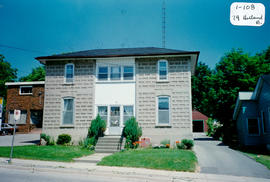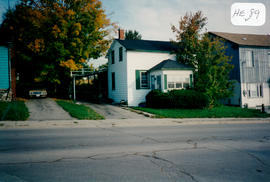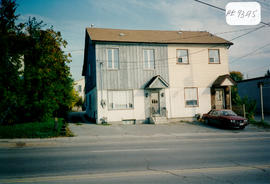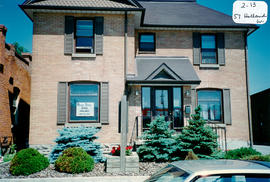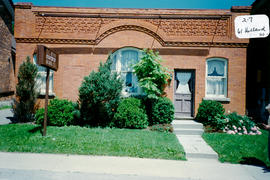- CA BWGPL GJ-HB-2017-03-27-02
- Pièce
- 1996
Fait partie de George Jackson fonds
The mid-block building located on the north side at 79 Holland St. East was built in the 1890’s in the Eclectic Neoclassical style. The house was built by Mr. Watson for Ed Coombs, his wife and children (Walter, Victor and Evelyn). Ed had moved into town from a farm (on the southwest side of Concession 6) during WWII. He was on the town council and became a reeve. He ran a coal and wood business for years. After Ed’s death, the business was taken over by his son Victor. There was a garage for cars, but Ed did not drive. He had a horse stable and loft above for a single horse that was used to haul one ton of coal. Walter worked all his life for Rogers Coal Co. in Toronto. He lived in the Walker House Hotel until it was demolished.
The two-storey, three-bay house has a symmetrical façade, a centre hall plan, and a medium- pitched, hip roof with a wide overhang. There are large window openings with high floor to ceiling dimensions. The house has arched window heads with stylized keystones and narrow, second-floor windows. It also has a unique, stylized masonry treatment complete with belt course, corner mouldings, and window surrounds. The two-storey, central-bay element was modified in the twentieth century. There is pressed-block construction with replacement siding at the central bay and a parged, block foundation. According to the 2000 inventory, the house has been maintained well. It also notes that the ‘modern’, central bay with aluminum siding and soffits is not sympathetic with the original design. (1, 2, 3)
Sans titre

